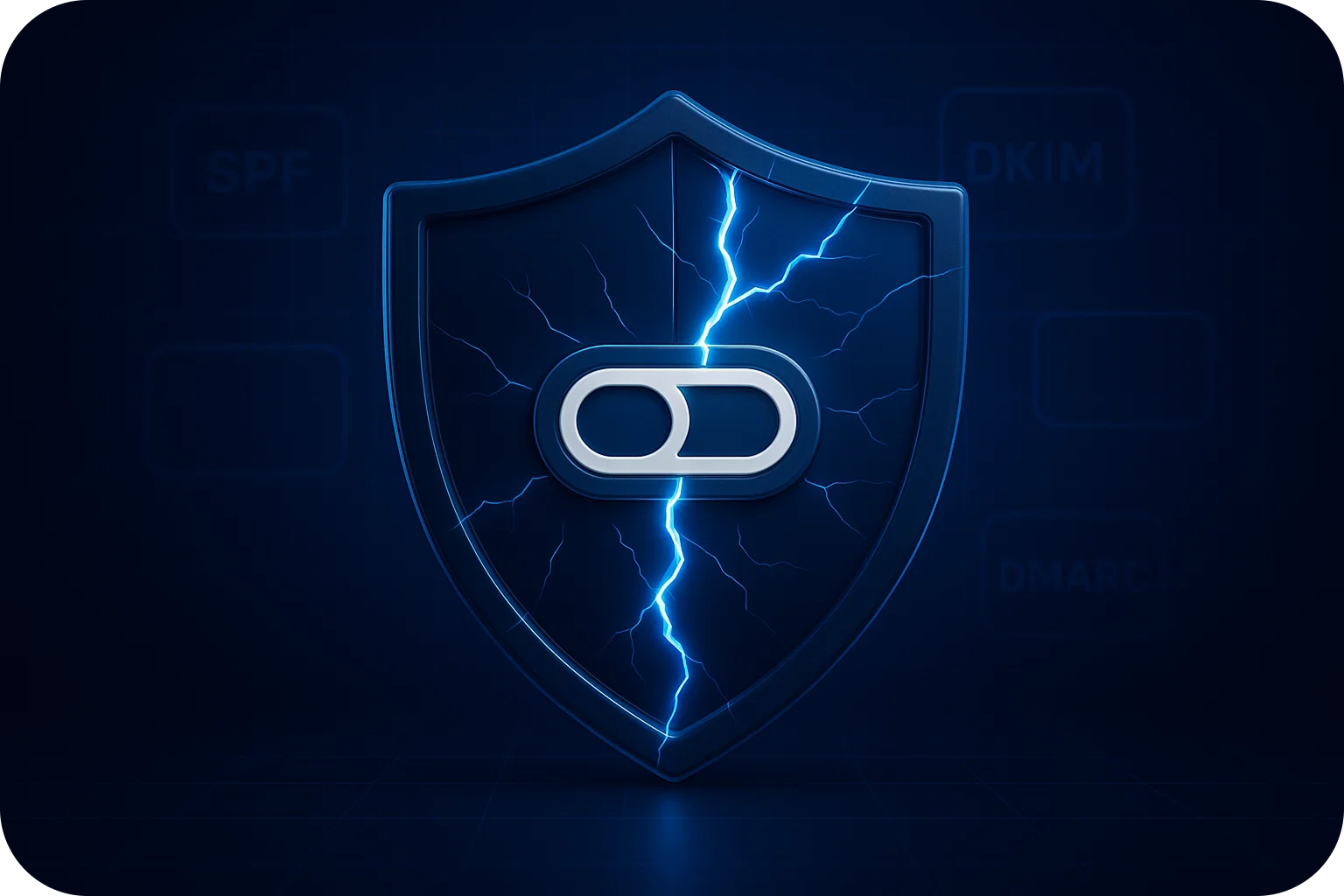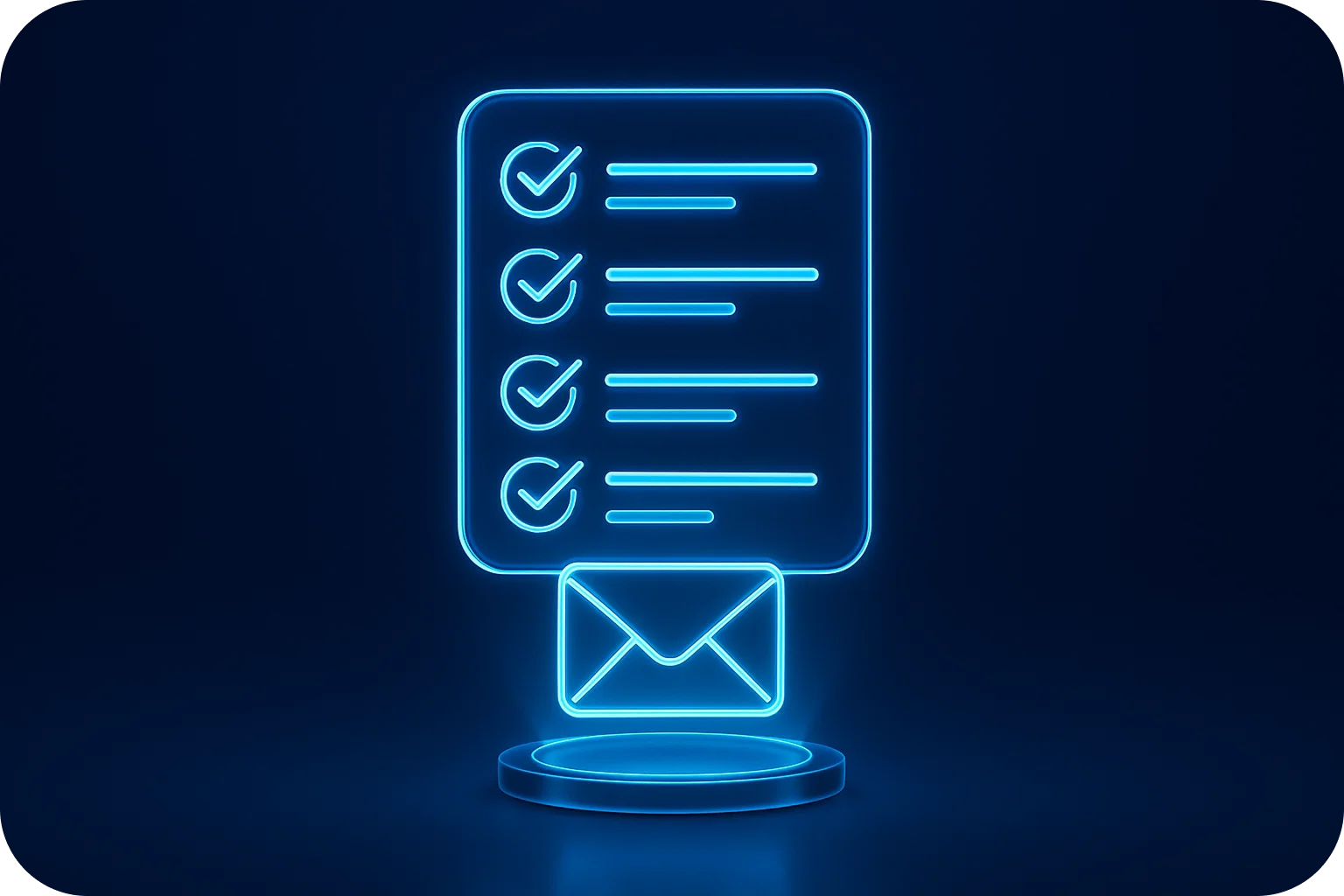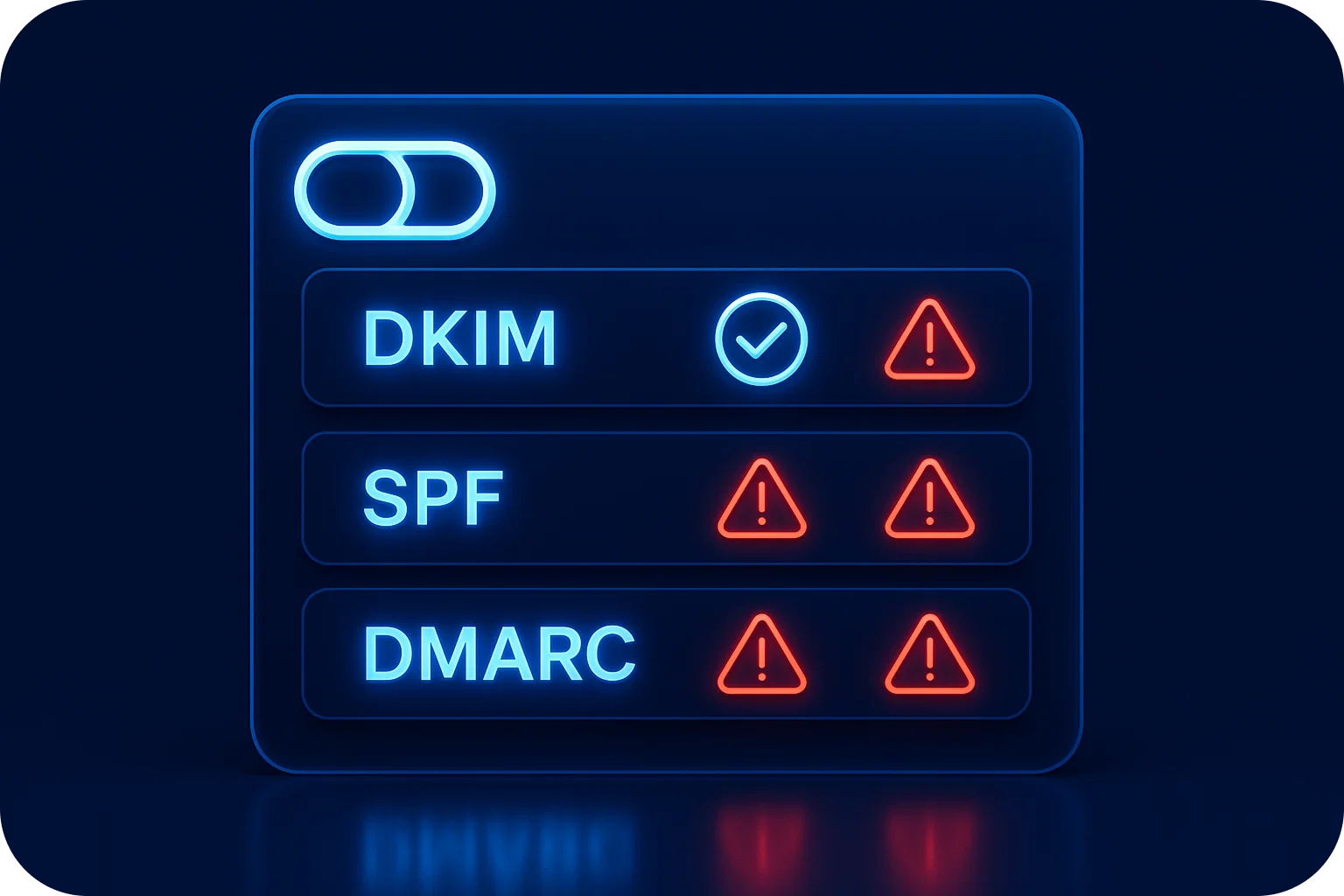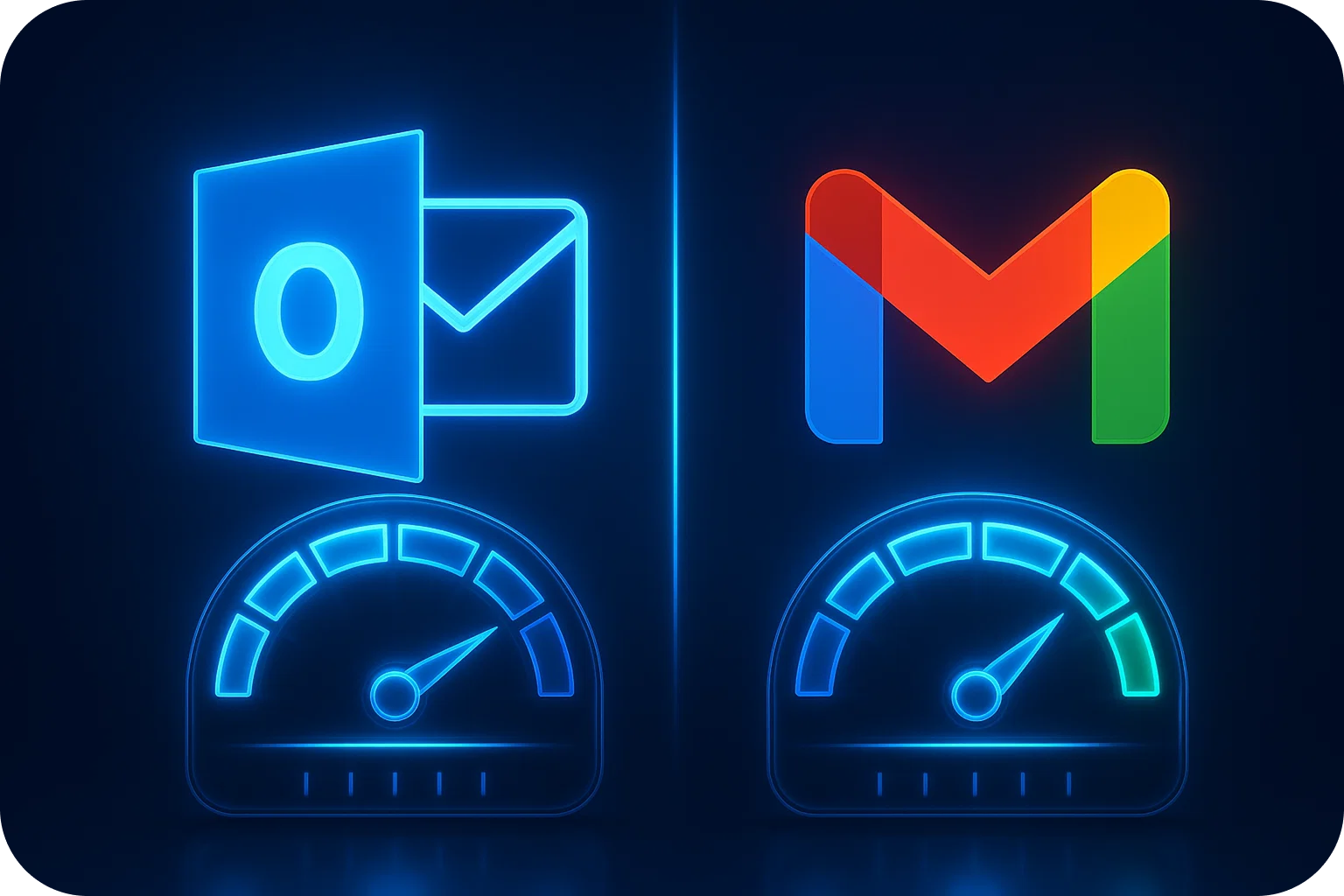5 DNS Configuration Mistakes That Are Killing Your Cold Email Campaigns

You've crafted the perfect cold email. Your offer is compelling, your targeting is precise, and your copy converts. But there's one problem: your emails aren't reaching inboxes.
The culprit? DNS configuration mistakes that silently sabotage your email deliverability before your prospects ever see your message.
In this guide, we'll expose the five most damaging DNS configuration errors that destroy cold email campaigns and show you exactly how to fix them to achieve the 98% deliverability rate your outreach deserves.
Why DNS Configuration Makes or Breaks Your Cold Email Success
Before we dive into the mistakes, let's establish why DNS records matter so much for email deliverability.
DNS (Domain Name System) records serve as your domain's authentication credentials. When you send cold emails, receiving servers like Gmail and Outlook check these records to verify you're a legitimate sender, not a spammer or phisher.
Think of DNS records as your email's passport. Without proper documentation, you're not getting through customs, no matter how important your message is.
The three critical DNS records for email authentication are:
- SPF (Sender Policy Framework): Specifies which mail servers can send emails on behalf of your domain
- DKIM (DomainKeys Identified Mail): Adds a digital signature to verify your emails haven't been tampered with
- DMARC (Domain-based Message Authentication, Reporting, and Conformance): Tells receiving servers what to do with emails that fail SPF or DKIM checks
When these records are misconfigured, email providers assume the worst and route your carefully crafted outreach straight to spam or reject it entirely.
Mistake #1: Missing or Incomplete SPF Records
The most common DNS configuration mistake is having no SPF record at all, or having one that doesn't include all your sending sources.
Why This Kills Deliverability
Without a proper SPF record, receiving servers can't verify that your emails are authorized to come from your domain. Gmail, Outlook, and other major providers will flag your emails as suspicious, dramatically reducing inbox placement rates.
Even worse, if you're using multiple sending tools (like Instantly, Lemlist, or Smartlead) alongside your regular email provider, and your SPF record doesn't include all of them, some of your emails will fail authentication while others pass, creating an inconsistent sender reputation.
How to Fix It
Create a comprehensive SPF record that includes all legitimate sending sources:
v=spf1 include:_spf.google.com include:spf.instantly.ai include:servers.mcsv.net ~all
Key elements:
- v=spf1: Declares this as an SPF record
- include: References other domains' SPF records (your email provider and outreach tools)
- ~all: Soft fail for emails from unlisted sources (recommended for cold email)
Pro tip: Keep your SPF record under 10 DNS lookups to avoid the lookup limit that causes authentication failures. If you're using multiple tools, consider using SPF flattening services or consolidating your email infrastructure.
Mistake #2: DKIM Records That Don't Match Your Sending Domain
DKIM authentication fails when your DKIM signature doesn't align with the domain in your "From" address, a mistake that's surprisingly common when using third-party email tools.
Why This Kills Deliverability
DKIM provides cryptographic proof that your email came from your domain and wasn't altered in transit. When DKIM fails, receiving servers lose trust in your emails' authenticity.
This mistake often happens when sales teams use outreach platforms that sign emails with the platform's domain instead of the sender's domain, breaking DKIM alignment and triggering spam filters.
How to Fix It
Ensure your DKIM record is properly configured for your actual sending domain:
- Generate a DKIM key pair through your email service provider or outreach tool
- Add the public key to your DNS as a TXT record (usually at a subdomain like default._domainkey.yourdomain.com)
- Configure your sending tool to sign emails with your domain's private key
- Test DKIM alignment using tools like Mail-Tester or Google's Email Header Analyzer
Critical check: Your DKIM signature domain (d=) must match or align with your "From" domain. If you're sending from peter@mailpool.ai, your DKIM signature should reference mailpool.ai, not your email tool's domain.
Mistake #3: No DMARC Policy (or One That's Too Strict)
DMARC is the policy layer that tells receiving servers what to do when SPF or DKIM checks fail. Many domains either skip DMARC entirely or set overly aggressive policies that backfire.
Why This Kills Deliverability
Without DMARC, you have zero visibility into authentication failures and no control over how receiving servers handle failed emails. You're flying blind.
On the flip side, jumping straight to a strict DMARC policy (p=reject) before testing can cause legitimate emails to be rejected if your SPF or DKIM configuration has any issues, devastating for cold outreach campaigns.
How to Fix It
Implement DMARC with a monitoring-first approach:
Stage 1 - Monitoring (Start here):
v=DMARC1; p=none; rua=mailto:dmarc@yourdomain.com; pct=100
This policy monitors all emails without affecting delivery, sending you reports about authentication failures.
Stage 2 - Quarantine (After 2-4 weeks of clean reports):
v=DMARC1; p=quarantine; pct=10; rua=mailto:dmarc@yourdomain.com
This sends 10% of failing emails to spam, allowing you to test the impact gradually.
Stage 3 - Reject (Only after extensive testing):
v=DMARC1; p=reject; pct=100; rua=mailto:dmarc@yourdomain.com
This fully protects your domain by rejecting all emails that fail authentication.
For cold email campaigns: Most successful senders stay at the quarantine level (p=quarantine) to maintain strong protection while allowing some flexibility for legitimate sending variations.
Mistake #4: Using Your Primary Domain for Cold Outreach
This isn't technically a DNS configuration error, but it's a strategic mistake with DNS implications that destroys both your cold email campaigns and your company's email reputation.
Why This Kills Deliverability
Cold email inherently carries a higher risk than transactional or relationship emails. When you send high volumes of cold outreach from your primary business domain (the one you use for customer communication, invoices, and internal emails), any deliverability issues, spam complaints, or blacklistings affect your entire organization's email capability.
If your cold campaign triggers spam filters or gets your domain blacklisted, suddenly your customer support emails, invoice notifications, and CEO's emails all land in spam too.
How to Fix It
Implement a multi-domain strategy:
- Primary domain (mailpool.ai): Reserved for transactional emails, customer communication, and internal use
- Cold outreach domains (getmailpool.ai, trymailpool.ai): Dedicated domains for cold email campaigns
For each outreach domain, configure complete DNS authentication:
- Full SPF records, including all sending sources
- DKIM keys are properly aligned with the sending domain
- DMARC policy starting at the monitoring level
- Proper MX records if you're receiving replies
Scaling tip: Successful cold email programs use 5-10 domains on average, with 3-5 email accounts per domain, sending a maximum of 20 emails per inbox per day. This distribution protects your sender reputation and maximizes deliverability.
Mistake #5: Skipping the Warm-Up Period After DNS Configuration
You've configured your DNS records perfectly. Everything validates. You're ready to send 10,000 cold emails tomorrow, right? Wrong.
Why This Kills Deliverability
Even with flawless DNS configuration, brand-new domains and email accounts have zero sender reputation. When you immediately blast high volumes of cold emails, receiving servers see a suspicious pattern: new domain, no history, sudden high volume, classic spam behavior.
The result? Your perfectly authenticated emails still land in spam because you haven't built the sender reputation that email providers require.
How to Fix It
Implement a strategic warm-up process:
Weeks 1-2: Foundation Building
- Send 5-10 emails per day per inbox
- Focus on emails to addresses that will engage (internal team, partners, existing contacts)
- Ensure high open and reply rates
Weeks 3-4: Gradual Increase
- Increase to 15-20 emails per day per inbox
- Begin mixing in cold outreach with warm contacts
- Monitor deliverability metrics closely
Week 5+: Full Capacity
- Reach maximum sending volume (20-30 emails per day per inbox)
- Maintain consistent sending patterns
- Continue monitoring and adjusting based on engagement
Critical success factors:
- Never exceed 100 emails per inbox per day (recommended: 20 per day)
- Maintain engagement rates above 5% (opens, replies, clicks)
- Use no more than 5 inboxes per domain (recommended: 3 per domain)
- Keep consistent sending schedules (no sudden volume spikes)
How to Audit Your Current DNS Configuration
Now that you know the five critical mistakes, here's how to check if your domains are properly configured:
Step 1: Check SPF Records
Use MXToolbox SPF Checker or the dig command:
dig TXT yourdomain.com
Verify all sending sources are included, and you're under the 10 DNS lookup limit.
Step 2: Validate DKIM
Send a test email to a Gmail account, view the original message, and check for "PASS" in the DKIM signature section. Verify the d= parameter matches your domain.
Step 3: Review DMARC Policy
Check your DMARC record:
dig TXT _dmarc.yourdomain.com
Confirm you have a policy in place and are receiving aggregate reports.
Step 4: Test Overall Deliverability
Use Mail-Tester.com: send an email to their test address and receive a comprehensive deliverability score with specific DNS issues highlighted.
Step 5: Monitor Ongoing Performance
Set up regular DMARC report reviews to catch authentication failures before they impact deliverability.
The Fast Track: Automated DNS Configuration for Cold Email Success
Manually configuring DNS records for multiple domains and email accounts is time-consuming and error-prone. A single typo in your SPF record can tank your deliverability for weeks.
This is why successful cold email programs use infrastructure platforms that automate DNS configuration, inbox setup, and deliverability management.
With Mailpool, you get:
- Automated DNS setup: SPF, DKIM, and DMARC records configured correctly in minutes, not hours
- 10-minute implementation: From signup to sending in less time than it takes to manually configure one domain
- Unlimited domains and inboxes: Scale your outreach without DNS configuration bottlenecks
Whether you're managing 5 domains or 50, proper DNS configuration is the foundation of cold email success. Don't let configuration mistakes silently destroy your campaigns.
Key Takeaways
DNS configuration mistakes are silent campaign killers, but they're completely preventable:
- Complete SPF records: Include all sending sources and stay under 10 DNS lookups
- Aligned DKIM signatures: Ensure DKIM domain matches your sending domain
- Progressive DMARC policies: Start with monitoring, graduate to quarantine, and only use reject after extensive testing
- Domain separation strategy: Never use your primary business domain for cold outreach
- Proper warm-up protocols: Build sender reputation over 3-4 weeks before full-scale sending
Fix these five mistakes, and you'll transform your cold email deliverability from inconsistent and frustrating to reliable and scalable.
Ready to eliminate DNS configuration headaches and achieve 98% deliverability? Sign up with Mailpool and get your cold email infrastructure configured correctly in just 10 minutes.
More articles
Get started now




%201.png)





